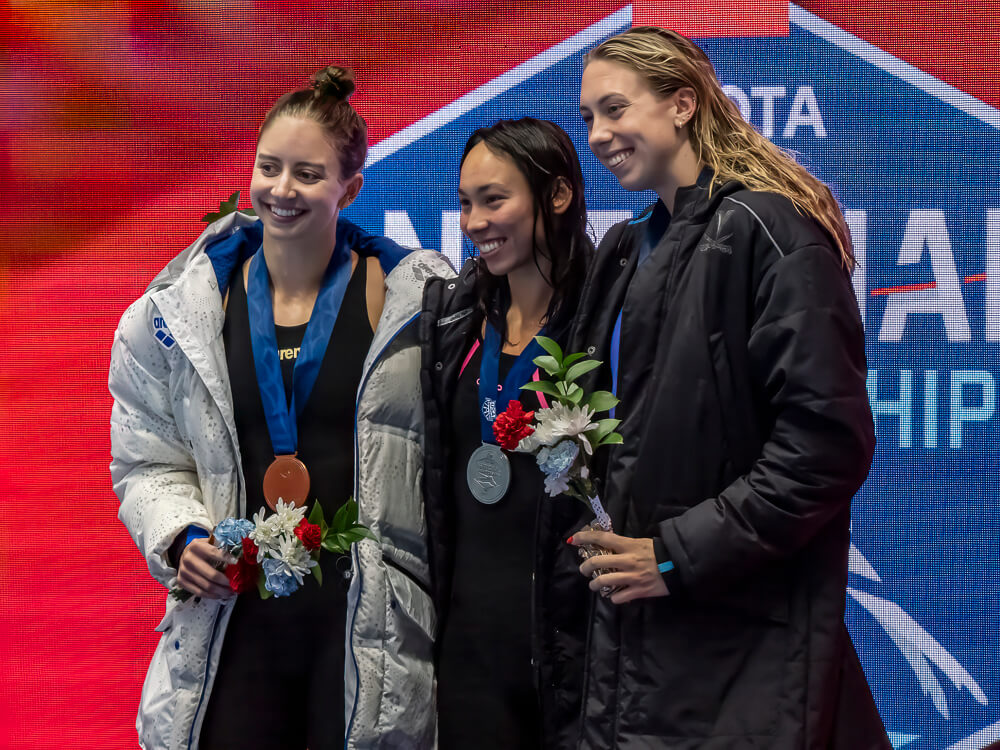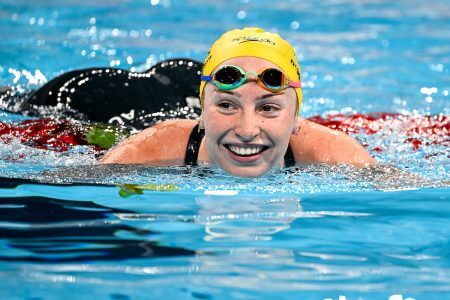World Championships Relay Analysis: American Women Favored for First 400 Free Relay Title in Eight Years

World Championships Relay Analysis: American Women Favored for First 400 Free Relay Title in Eight Years
The reign of dominance for Australia in the women’s 400 freestyle relay stretches back more than a decade to the country’s upset win at the London Olympic Games. Three further Olympic gold medals have followed, with the margins of victory in 2016, 2021 and 2024 all more than one second, along with four world titles and numerous world records. Swimmers such as Cate Campbell, Brittany Elmslie, Bronte Campbell, Emma McKeon and Meg Harris have been part of the finals squad on two or more occasions while Mollie O’Callaghan was a prelims swimmer in Tokyo before leading the Dolphins to a dominant victory last year in Paris.
O’Callaghan is only 21 years old, but she is the rare veteran presence on Australia’s roster heading to this year’s World Championships in Singapore after winning the 100 free at the Australian selection meet in 52.87. McKeon and the Campbell sisters have retired while Shayna Jack, who joined O’Callaghan in the 100 free final at the Paris Games, did not qualify to represent her country at Worlds. Jack fell to fifth in the 50 free and a jarring eighth place in the 100 at Australia’s recent selection meet. Harris will be in Singapore after a Trials win in the 50 free, but her 100-meter season-best of 53.01 is a long way from her Paris anchor split of 51.94.
Meanwhile, the United States will bring its fastest-ever contingent of 100 freestylers. The event’s final at U.S. Nationals marked the first time three Americans have broken 53 in the same heat. Torri Huske swam the fastest time in the world this year at 52.43 while Gretchen Walsh went a best time at 52.78. Simone Manuel swam her fastest time in six years on the way to a third place finish while Kate Douglass was fourth at a still-respectable time of 53.16. Erin Gemmell and Anna Moesch also made the team as relay swimmers, but it is expected that the Americans roll out the same foursome that won silver in Paris.
Only this time, the numbers show a different story in the long-standing rivalry between the two swimming powers. Composite times put the Americans significantly ahead.
Below are the added-up times for the top countries in this event. Only 2025 season-best times are used here, but limitations of this analysis will be considered.
- United States: Torri Huske 52.43 + Gretchen Walsh 52.78 + Simone Manuel 52.83 + Kate Douglass 53.16 = 3:31.20
- Australia: Mollie O’Callaghan 52.87 + Meg Harris 53.01 + Olivia Wunsch 53.38 + Alex Perkins 53.53 = 3:32.79
- China: Wu Qingfeng 53.27 + Cheng Yujie 53.35 + Yu Yiting 54.31 + Wenwen Yang 54.46 = 3:35.39
- Italy: Sara Curtis 53.01 + Emma Virginia Menicucci 54.14 + Chiara Tarantino 54.28 + Sofia Morini 54.56 = 3:35.99
- Canada: Penny Oleksiak 53.89 + Mary-Sophie Harvey 54.34 + Taylor Ruck 54.41 + Brooklyn Douthwright 54.74 = 3:37.38
- Great Britain: Freya Anderson 54.09 + Eva Okaro 54.10 + Freya Colbert 54.54 + Evelyn Davis 54.75 = 3:37.48
For the Americans, what you see is what you get. Huske and Douglass each swam marginally quicker in 2025 than they did at Nationals, but simply repeating those efforts combined with solid relay exchanges will surely deliver a gold medal and the first-ever sub-3:30 performance by a team other than Australia. The issue comes if the Americans falter while Australia’s inexperienced swimmers step up.

Mollie O’callaghan — Photo Courtesy: Andrea Masini / Deepbluemedia / Insidefoto
More can be expected out of O’Callaghan and Harris at the year’s major international competition, but none of the group consisting of Olivia Wunsch, Alex Perkins, Hannah Casey or Abbey Webb have ever raced in a major international final. Wunsch did earn a gold medal in Paris by virtue of her prelims relay swim in this event. But moving into a spot with medals on the line is a big jump, particularly when she cannot be the weak leg if Australia has hopes of continuing its gold-medal streak.
China nearly snatched silver away from the Americans in Paris thanks to four splits under 53. Cheng Yujie and Wu Qingfeng have already posted solid swims this year, and Zhang Yufei is expected to again contribute, but the No. 4 spot lacks an obvious option with Yang Junxuan, who set China’s national record at 52.48 leading off the Paris squad, not expected to race at Worlds.
Canada will look to get back on the podium with veterans Penny Oleksiak and Taylor Ruck filling their usual roles. Summer McIntosh could join the team, but a finals swim would be her third race of the day one finals session after the 400 free final and 200 IM semifinal. Mary-Sophie Harvey is a solid option, but the absence of the now-retired Maggie Mac Neil is hard to replace.
Italy could contend for a medal thanks to this year’s breakout from Sara Curtis plus a solid group of 54-second swimmers around her. Sweden finished fifth in Paris, but with Sarah Sjostrom out of competition this year, it’s hard to imagine a contenting quartet at Worlds. The Netherlands’ Marrit Steenbergen is the only swimmer this year aside from O’Callaghan and the Americans to crack 53, but the Dutch depth has suffered significantly in recent years.




You made a typo on the Australian time: should it be 3:32,94?
Also, Olivia Wunsch’s time in the 100 Free final was 53.38 not 53.53 so the Australian add-up should be 3:32.79.